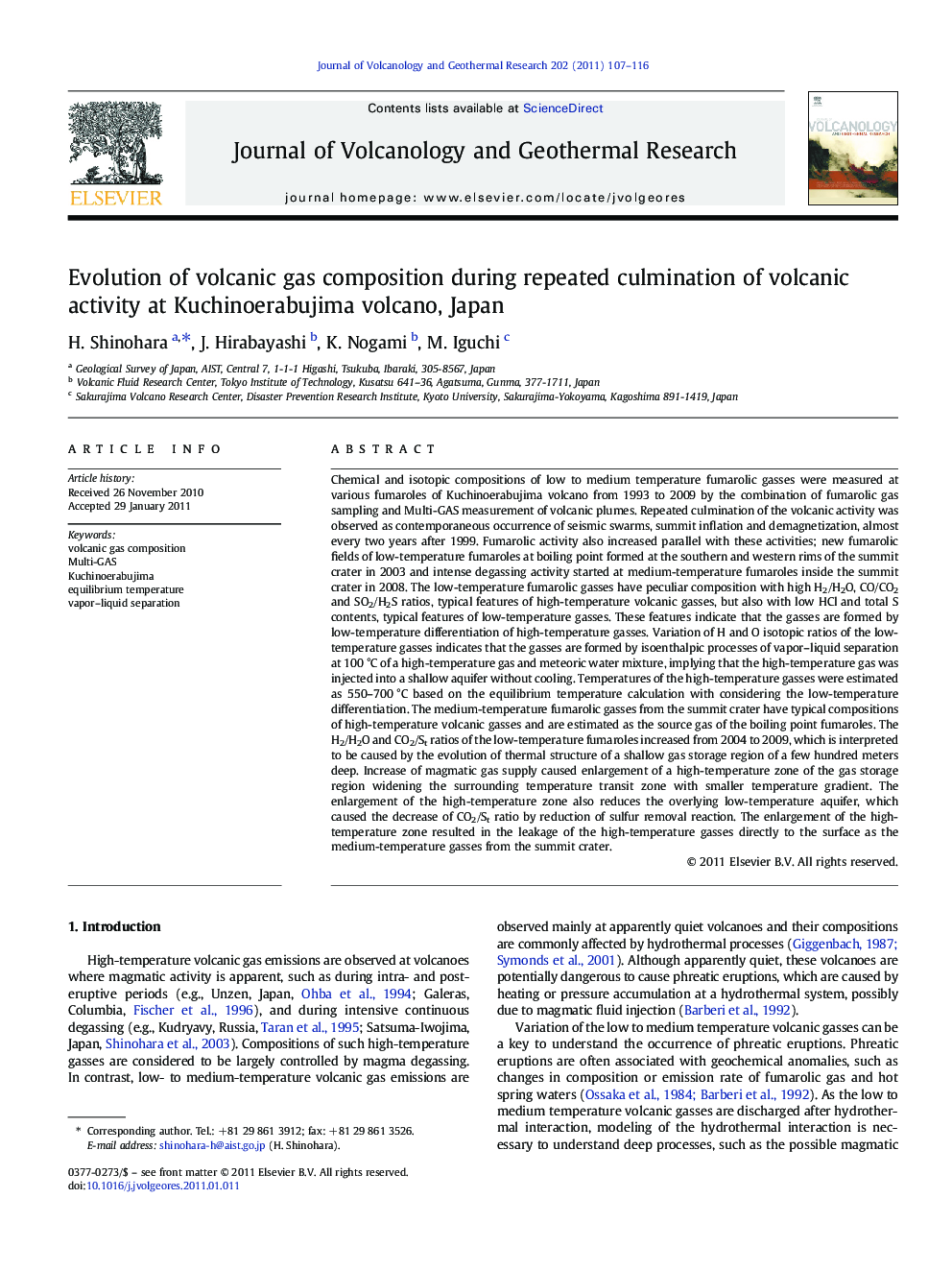| کد مقاله | کد نشریه | سال انتشار | مقاله انگلیسی | نسخه تمام متن |
|---|---|---|---|---|
| 4712851 | 1638405 | 2011 | 10 صفحه PDF | دانلود رایگان |

Chemical and isotopic compositions of low to medium temperature fumarolic gasses were measured at various fumaroles of Kuchinoerabujima volcano from 1993 to 2009 by the combination of fumarolic gas sampling and Multi-GAS measurement of volcanic plumes. Repeated culmination of the volcanic activity was observed as contemporaneous occurrence of seismic swarms, summit inflation and demagnetization, almost every two years after 1999. Fumarolic activity also increased parallel with these activities; new fumarolic fields of low-temperature fumaroles at boiling point formed at the southern and western rims of the summit crater in 2003 and intense degassing activity started at medium-temperature fumaroles inside the summit crater in 2008. The low-temperature fumarolic gasses have peculiar composition with high H2/H2O, CO/CO2 and SO2/H2S ratios, typical features of high-temperature volcanic gasses, but also with low HCl and total S contents, typical features of low-temperature gasses. These features indicate that the gasses are formed by low-temperature differentiation of high-temperature gasses. Variation of H and O isotopic ratios of the low-temperature gasses indicates that the gasses are formed by isoenthalpic processes of vapor–liquid separation at 100 °C of a high-temperature gas and meteoric water mixture, implying that the high-temperature gas was injected into a shallow aquifer without cooling. Temperatures of the high-temperature gasses were estimated as 550–700 °C based on the equilibrium temperature calculation with considering the low-temperature differentiation. The medium-temperature fumarolic gasses from the summit crater have typical compositions of high-temperature volcanic gasses and are estimated as the source gas of the boiling point fumaroles. The H2/H2O and CO2/St ratios of the low-temperature fumaroles increased from 2004 to 2009, which is interpreted to be caused by the evolution of thermal structure of a shallow gas storage region of a few hundred meters deep. Increase of magmatic gas supply caused enlargement of a high-temperature zone of the gas storage region widening the surrounding temperature transit zone with smaller temperature gradient. The enlargement of the high-temperature zone also reduces the overlying low-temperature aquifer, which caused the decrease of CO2/St ratio by reduction of sulfur removal reaction. The enlargement of the high-temperature zone resulted in the leakage of the high-temperature gasses directly to the surface as the medium-temperature gasses from the summit crater.
Research highlights
► Volcanic gas composition changes at Kuchinoerabujima volcano are reported.
► Fumarolic activity increase was observed with other geophysical changes.
► Source high-T gas composition is estimated.
► Differentiation process of low to med-T fumarolic gasses is modeled.
► Evolution of the gas supply process is modeled.
Journal: Journal of Volcanology and Geothermal Research - Volume 202, Issues 1–2, 30 April 2011, Pages 107–116